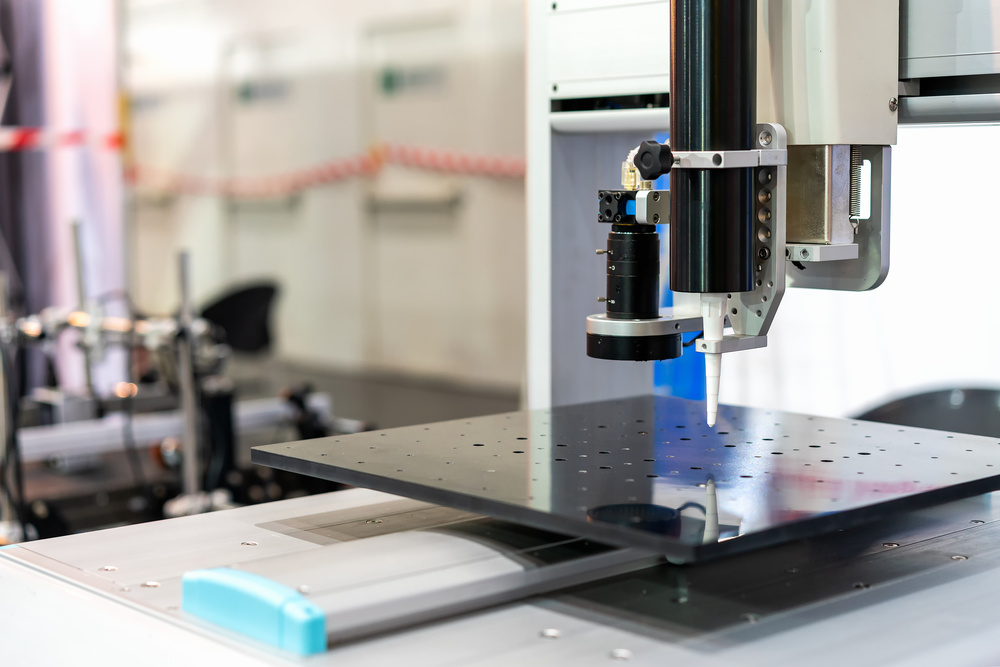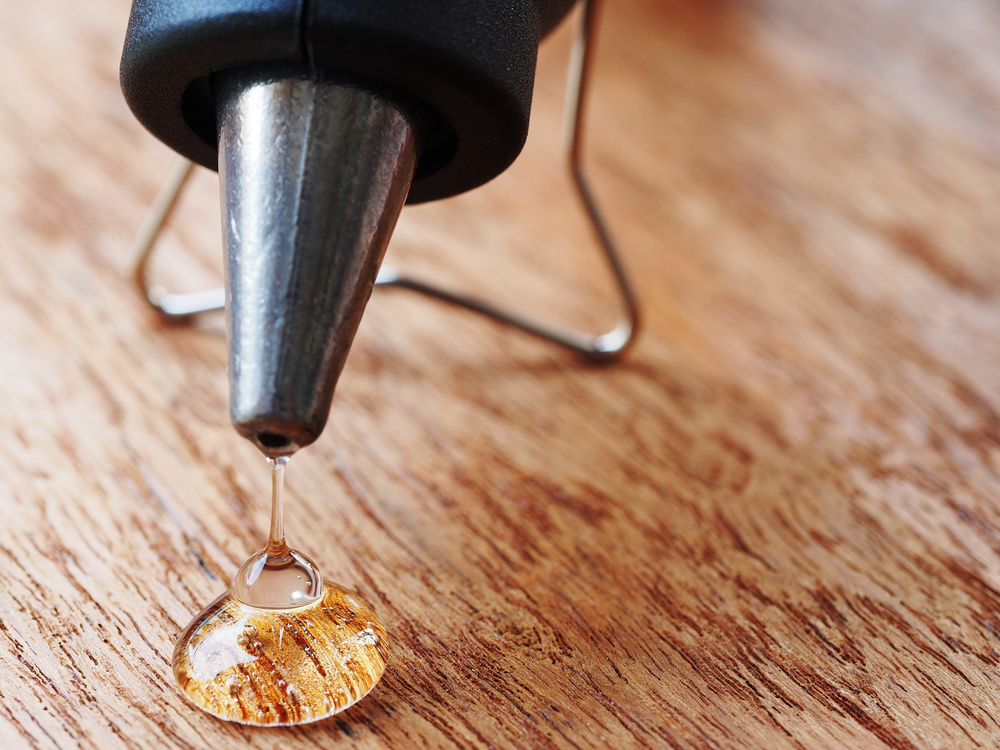Hot melt adhesives (HMAs) are one of the most versatile tools in any home or business. Their applications are seemingly endless, which is why they’re such a popular choice for various needs. From simple tasks like hanging a picture on the wall to more complex projects like packaging, hot melt adhesives can do it all.
HMAs are typically applied to a surface as a hot melt adhesive film, web, or bead. HMAs generally are applied using a hot melt adhesive gun, which melts the adhesive. On the other hand, there are many types of hot melt adhesives, each with unique properties and uses.
This article will explore the different types of hot melt adhesives and their uses in the home and industrial settings.
What Are Hot Melt Adhesives?
Hot melt adhesives are thermoplastic materials that can be melted and solidified repeatedly. When heated, these materials melt to flow easily and can be molded into any shape. Hot melt adhesives are available in various forms, including pellets, powders, liquids, and pastes.
There are two main types of hot melt adhesives: pressure-sensitive adhesives and heat-activated adhesives. Pressure-sensitive adhesives are activated by pressure, not heat. They’re typically used for lightweight bonding materials like paper or plastic. On the other hand, heat-activated adhesives require heat to activate the bonding process. These adhesives are often used for heavier materials like metal or glass.
Hot melt adhesives can be applied in various ways, depending on the type of adhesive and the materials being bonded. Pellets and powders can be applied using a hot glue gun. Liquid adhesives can be applied with a brush, roller, or sprayer. Once applied, hot melt adhesives solidify quickly, typically within seconds.
Here are a few things to keep in mind if you’re considering using hot melt adhesives for your home or business:
1. Formulations And Viscosities
Hot melt adhesives are available in various formulations and viscosities, allowing them to be applied to materials of different thicknesses. For example, some formulations are designed for specific materials, such as plastics or wood. Meanwhile, some are designed for particular applications, such as laminating or bonding.
The viscosity of a hot melt adhesive is also important to consider because it’ll affect how it flows and how easily it can be applied. For example, a high-viscosity adhesive will be thick and difficult to spread, while low-viscosity ones will be thin and easy to spread.
In addition, it’s worth noting that the viscosity of a hot melt adhesive can be adjusted by adding or removing filler materials.
2. Packaging Options
Because there are so many hot melt adhesive packaging types, you can pick the one most suitable for your needs. For example, some adhesives are offered in bulk containers, while others are sold as cartridges that can be attached to a gun. Both types of adhesives can be used for the same purpose.
3. Curing Time
The amount of time necessary for a hot melt adhesive to become firm and stable is called the curing time for the adhesive. Depending on the formulation, the time required for the curing might range from a few seconds to a few minutes. Essentially, the thicker the adhesive is applied, the longer the curing time is.

Uses Of Hot Melt Adhesive For Home And Business
Hot melt adhesives are one of the most versatile adhesives on the market. HMAs are used in several industries, including automotive, electronics, and packaging. Significantly, they’re used in bonding plastics, metals, glass, wood, fabrics, leather, and paper. Also, they’re commonly used for home improvement and DIY projects.
Here are some of the most common uses for hot melt adhesives:
- Crafts: Hot melt adhesives are an excellent choice for use in various craft applications. Beads, sequins, and other embellishments can be fastened to paper, wood, or cloth with the help of HMAs.
- Repairing Broken Items: You may fix broken items around the house, like vases, plates, and figurines, by using hot melt adhesives. This type of adhesive can also be used for other kinds of repairs.
- Assembling Furniture: In the furniture industry, hot melt adhesives are frequently used to assemble various pieces of furniture, such as chairs, tables, and dressers.
- Securing Auto Parts: Hot melt adhesives are also used in the automotive sector to secure bumper covers and many other auto parts. This practice is known as ‘securing auto parts.’
- Packaging: Hot melt adhesives are often used for packaging goods in wholesale and retail. Boxes and bags are often sealed with them.
- Bookbinding: Both hardcover and paperback books are often bound with hot melt adhesives.
- Picture Framing: Hot melt glue is also used to stick the glass or backing to the frame when framing a picture.
Benefits Of Using Hot Melt Adhesives
Hot melt adhesives have many advantages over other types, such as water-based adhesives. This makes them well-suited for a wide range of applications in home and business settings. Some of the benefits include:
Fast Curing Time
One of the most significant advantages of HMAs is that they have a quick curing time. This is because the adhesive only needs to be heated to a specific temperature to become active, meaning that it can be applied and set in a matter of minutes.
Unlike water-based adhesives, which can take several hours or even days to cure, hot-melt adhesives cure almost instantly. This makes HMA ideal for applications where speed is of the essence, such as packaging.
High Strength
Another advantage of HMAs is that they can provide a powerful bond. This is because the adhesive bonds well to porous and non-porous surfaces. It can even bond to complex surfaces such as metals and glass. This makes HMAs ideal for applications where a strong bond is required, such as in the automotive or construction industries.
Hot melt adhesives are strong and durable but can be removed if necessary. They can be removed by heating the bond area with a heat gun or hair dryer. The heat will cause the adhesive to soften and become less sticky. The bond can then be pulled apart.
Good Temperature And Chemical Resistance
Hot melt adhesives also have good temperature resistance, meaning that they can withstand high temperatures without losing their bonding strength. This makes them ideal for applications where the bonded materials will be exposed to high temperatures, such as in the electronics or aerospace industries.
In addition, HMAs have good chemical resistance, which indicates that they’re unaffected by the vast majority of everyday pollutants. Because of this, they’re an excellent choice for applications where the bonded materials will be exposed to harsh chemicals, such as in the food or medical industries.
Versatile
Hot melt adhesives are also quite versatile and can be used in many materials, including plastics, metals, glass, and fabric. This vast range of materials allows HMAs to be employed in numerous applications. They’re created from various formulas—each tailored for a specific function.
For instance, some formulations are designed for applications that involve high temperatures, and others, for low temperatures.
Environmentally Friendly
Hot melt adhesives are also generally considered to be safe for the environment. They’re made from renewable resources, such as plant-based oils. HMAs don’t contain volatile organic compounds or VOCs, which can harm the environment. HMAs are also not flammable, so they’re not a fire hazard.
Furthermore, HMAs can be disposed of in many ways, including recycling, incineration, and landfill. HMAs disposed of in landfill sites will eventually degrade and release their chemicals into the environment.
Economical
Hot melt adhesives are also very economical. They’re available in a wide range of formulations to suit a specific purpose. This makes them ideal for many applications involving different materials being bonded together. As a result, you don’t need a separate adhesive for every material, helping you save money on adhesive costs.
Using Hot Melt Adhesives Safely
There are a few safety concerns when using hot melt adhesives. First, it’s essential to select the right adhesive for the job. Keep in mind that there are various formulations available, each of which is designed for specific applications.
Second, it’s important to follow the manufacturer’s instructions carefully. Improper application of hot melt adhesives can result in a poor bond. In addition, they can damage the materials being joined.
Finally, it’s crucial to have plenty of ventilation when using hot melt adhesive to avoid inhaling toxic fumes. Also, don’t forget to clean up any spills immediately to prevent contamination.
Summary
Hot melt adhesives are a type of adhesive commonly used in various home and business applications and are a valuable tool for many individuals. When used correctly, they offer a quick, strong, and durable bond that can be used on different materials.
No matter what your material or application is, a hot melt adhesive can meet your needs. With their quick curing time, high strength, and ability to bond various materials, hot melt adhesives are a versatile solution for numerous home and business applications.
With some knowledge and practice, you can use hot melt adhesives today to complete multiple home and business projects.
Related Posts












